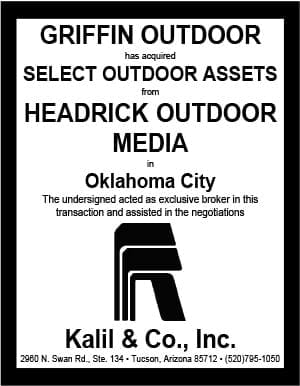
Texas Highways published A Sightseeing Journey of the Billboards of Houston, 55 Years after LBJ’s Beautification Act. The author spent 4-5 hours driving Houston freeways looking at billboards. Some of the author’s conclusions:
There are fewer billboards.
“billboards were relatively few compared to the days of my youth…at their peak, the vast city was forested with somewhere between 10,000 and 15,000 billboards. As of last year, that number was 1,500.”
Billboards work.
“Why do advertisers love billboards…because they work…Driving is the one activity the vast majority of Houstonians share in and so there are few more-efficient ways to get your message across than highway signs.”
Insider was surprised that there was no discussion of digital billboards. We asked billboard attorney Richard Rothfelder to comment and he said this:
 I read the article in Texas Highways magazine about billboards in Houston, 55 years after Lady Bird’s Highway Beautification Act, and found it mostly accurate and entertaining, but lacking some of the following details. First, the author is correct in that the number of billboards in Houston has drastically decreased over the last 40 years. The author didn’t mention it, but the primary reason for this reduction is that the Houston Sign Code was amended in May 1980 to prohibit any new billboards. Since then, lost leases, condemnations, and other attrition have caused thousands of billboards to be removed, leaving as grandfathered those built before 1980, or relocated in lieu of just compensation in eminent domain. Second, unlike many cities across Texas and the country, Houston still doesn’t permit digital displays for off-premise signs. By contrast, the City does authorize digital displays for on-premise signs, although they are subject to a laundry list of restrictions, including 100 square feet in size. Third, and relatedly, the Houston Sign Code remains content-based and therefore constitutionally suspect after the US Supreme Court’s 2015 decision in Reed vs Gilbert. In particular, Houston still distinguishes exemptions and regulations between on-premise and off-premise signs based on whether the goods, services, or businesses displayed on the sign are located on or off of the same premises where the sign is situated. This on-premise/off-premise classification has led to many HBAs and municipal sign codes to be held unconstitutional by courts across the country, including in Reagan vs Austin, Tennessee vs Bright, and Auspro vs TxDOT. Many cities and states have amended their sign regulations to render them content-neutral and to cure the constitutional defects, but not Houston, perhaps leaving it to the lawyers to do the work.
I read the article in Texas Highways magazine about billboards in Houston, 55 years after Lady Bird’s Highway Beautification Act, and found it mostly accurate and entertaining, but lacking some of the following details. First, the author is correct in that the number of billboards in Houston has drastically decreased over the last 40 years. The author didn’t mention it, but the primary reason for this reduction is that the Houston Sign Code was amended in May 1980 to prohibit any new billboards. Since then, lost leases, condemnations, and other attrition have caused thousands of billboards to be removed, leaving as grandfathered those built before 1980, or relocated in lieu of just compensation in eminent domain. Second, unlike many cities across Texas and the country, Houston still doesn’t permit digital displays for off-premise signs. By contrast, the City does authorize digital displays for on-premise signs, although they are subject to a laundry list of restrictions, including 100 square feet in size. Third, and relatedly, the Houston Sign Code remains content-based and therefore constitutionally suspect after the US Supreme Court’s 2015 decision in Reed vs Gilbert. In particular, Houston still distinguishes exemptions and regulations between on-premise and off-premise signs based on whether the goods, services, or businesses displayed on the sign are located on or off of the same premises where the sign is situated. This on-premise/off-premise classification has led to many HBAs and municipal sign codes to be held unconstitutional by courts across the country, including in Reagan vs Austin, Tennessee vs Bright, and Auspro vs TxDOT. Many cities and states have amended their sign regulations to render them content-neutral and to cure the constitutional defects, but not Houston, perhaps leaving it to the lawyers to do the work.
[wpforms id=”9787″]
Paid Advertisement

















